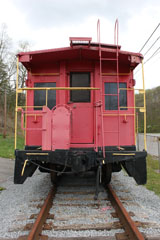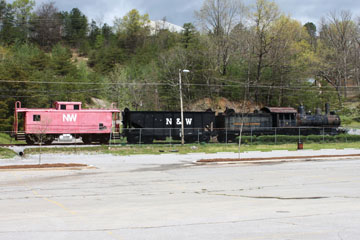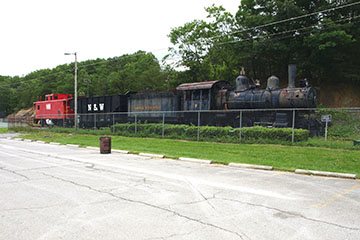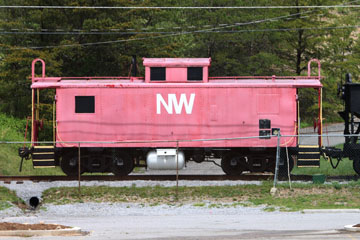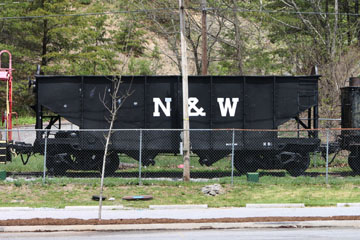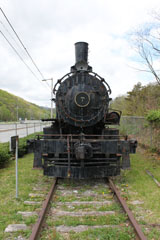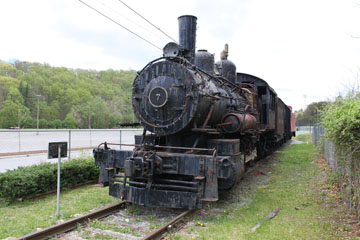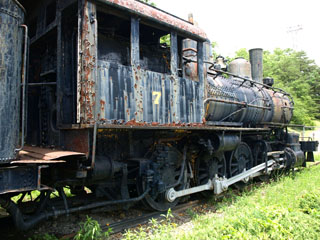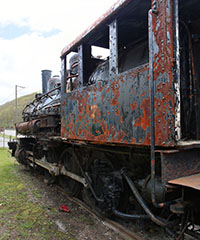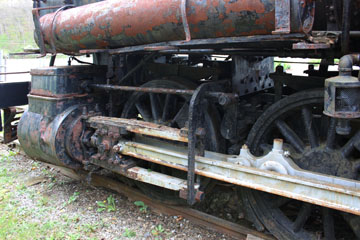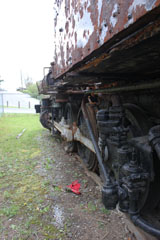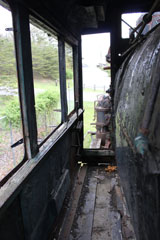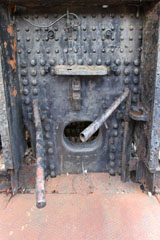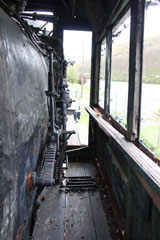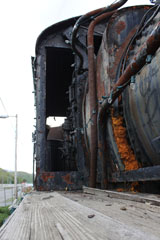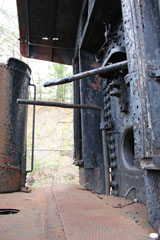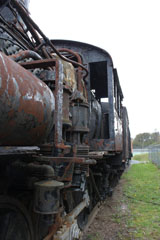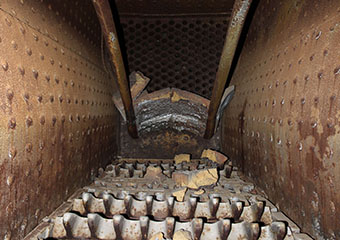

NW G1 #7 is on display at the north eastern end of Bluefield City Park just off Stadium Road near the intersection with Bluefield High School Road. Located in the City of Bluefield, WV, it actually stands only a few feet from the Virginia state line. It is a Consolidation type (2-8-0), one of seven G1 locomotives built by Baldwin in 1897 to work as helpers on Norfolk & Western's Bluestone Junction-Elkhorn Tunnel grade, part of the railroad's Flat Top Division.
Great Flat Top Mountain ran for forty miles in a south-westerly direction and formed a natural barrier to N&W's westward expansion until the Elkhorn Tunnel was built between 1886 and 1888. With opening of the ten mile Elkhorn Extension from Bluestone Junction up a 2.36% grade to Ruth and down Elkhorn Tunnel to Coaldale and Elkhorn, the railroad was then well placed to expand into the Ohio River Valley.
In 1890, construction of the Ohio Extension began to connect with N&W's newly acquired one hundred and twenty-six mile Scioto Division from Caldwell to Petersburg, OH, formerly the Scioto Valley Railway. The one hundred and ninety-one mile connection was finished in 1892 costing $8,000,000, far in excess of the $5,037,000 estimated in 1890!

#7 is in quite an exposed and isolated location. It was originally on open display but, as result of quite bad damage caused by vandals over the years, it was eventually fenced off.
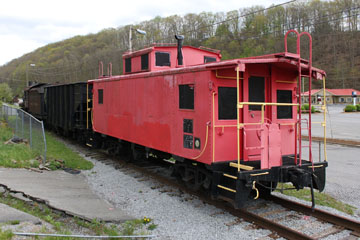
The locomotive is on display with an unnumbered NW H-9 open hopper car and NW C-9P Caboose #557761. This was built at Wheeling & Lake Erie's Ironville Shops in 1954 as NKP #761.
#557761 was the first in Norfolk & Western's
C9-CP9 series.
Originally numbered #353, the locomotive was renumbered #201 in 1906. Sold to the Virginia Carolina in 1917, it returned to N&W as #7 in 1920 when the N&W acquired the VC. It then worked out of Bluefield on the Clinch Valley line until retired in 1955.
The first G class was built at the Roanoke Machine Works in 1888, and one hundred and twenty-five were eventually rostered, built at Roanoke as well as by Baldwin and the Rogers Locomotive Works between 1889 and 1893. The seven G1s built by Baldwin in 1897 were almost identical to the G class, but had a greater heating surface (1.812 sq ft v. 1,770), operated at a higher boiler pressure (180 psi v. 150) and delivered more power (29,376 lbs tractive effort v. 24,480 lbs).
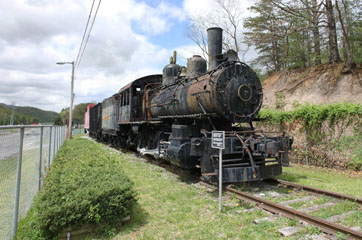
The engine weighs 120,785 lbs with 107,000 lbs
on the eight 50" drivers. It is equipped with
internal Stephenson valve gear and the cylinders are 20" x 24".
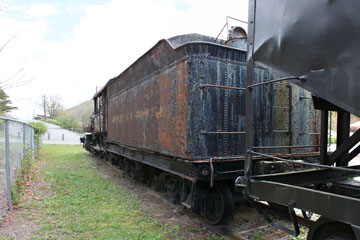
The tender weighs 116,630 lbs and has a 6,000 gallon water and 13.8 ton coal capacity.
With opening of the Pocahontas coal field in West Virginia in 1883, the N&W began buying heavier locomotives to haul coal from the mines to its facilities on the coast at Norfolk, VA. The Consolidation type became standard for this work and, during the next two decades, over four hundred and fifty were bought by the railroad.





